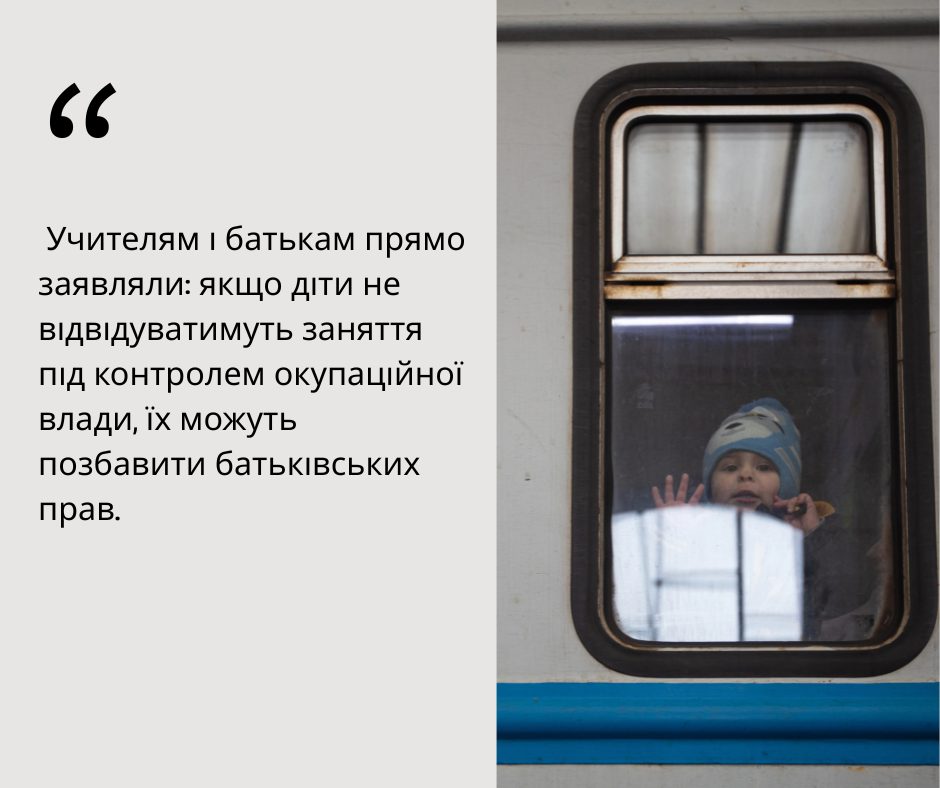

From the first days of the invasion, Russian troops established control over Kherson. At checkpoints, they checked documents, phones, and luggage, intimidated people, and placed equipment among residential neighborhoods. Residents witnessed numerous crimes. In March 2022, in one of the city's neighborhoods, Russian tanks shot civilian cars carrying local residents. The exact number of deaths remained unknown. In the spring, peaceful rallies began in the city under Ukrainian flags.
People took to the squares and demanded that the occupiers leave. At the same time, teachers in schools and lyceums were demanded to switch to Russian programs under the threat of persecution. Teachers and parents were directly told: if children do not attend classes under the control of the occupation authorities, they may be deprived of their parental rights. In September 2022, the occupiers began to appropriate medical and fire trucks in Kherson. That same month, armed soldiers set fire to a local hardware store. In December 2022, there were documented cases of children being forcibly deported from Kherson to Crimea. Children were sent to camps where they were isolated from their parents, families were required to obtain Russian passports, and the process of confirming parental rights was delayed.
These stories are just some of the crimes that have become commonplace for civilians in temporarily occupied Kherson: harassment, intimidation, forced “Russification” of education, and illegal removal of children.
This documentation project is supported by the Norwegian Helsinki Committee (NHC). The views and conclusions expressed in this publication are those of the authors alone and do not necessarily reflect the position of the NHC.